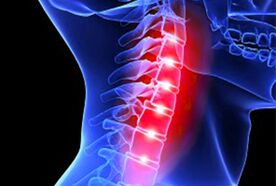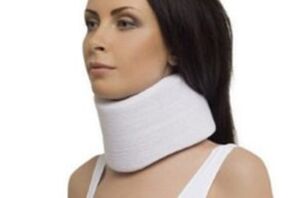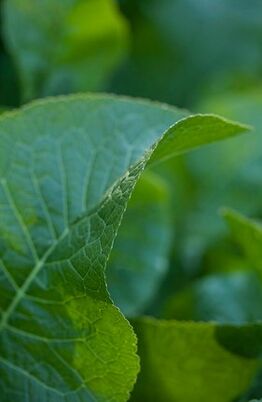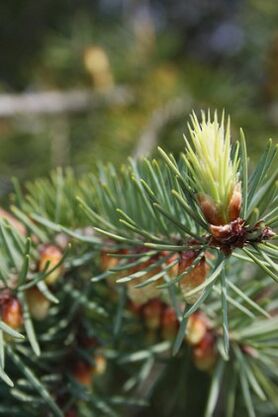
Most of humanity suffers from cervical osteochondrosis - this is a compensation for a sedentary lifestyle and inadequate load on the spine.
Cervical osteochondrosis is a degenerative-dystrophic lesion of the intervertebral disc of the cervical spine. Such a lesion progressively spreads to all elements of the disc, and over time, the degenerative-dystrophic lesion reaches adjacent vertebrae, intervertebral joints, and ligament apparatus.
Almost half of the adults in the world suffer from cervical osteochondrosis. Often in everyday life, pain in the neck and joints is generally called "salt deposition", but this is a fundamentally inaccurate definition. This is what people said and, of course, people understand this phrase literally. But in fact, salt is not deposited in the joints (with the exception of a disease such as gout - with it uric acid salts accumulate in the joints).
Treatment of osteochondrosis of the cervical spine does not pursue the purpose of "resorption of salts, deposits", etc. This misconception exists not only among patients but also among some physicians prescribing a certain strict diet and frequent check-up radiographs. With osteochondrosis, there is "no salt deposits", but reactive ossification and, of course, no measure can lead to "deposit resorption".
The degree and stage of development of the disease
Osteochondrosis of the cervical spine is a chronic disease with periods of worsening and remission. Such periods have different durations. Prompt treatment of the disease is possible if it is the first stage of the disease and is observed at an early stage.
The rate of disease development
| Power | Patient well-being, symptoms | EVENTS |
|---|---|---|
| I scale | Mild back pain of the cervix, which may worsen with head turning | Slight muscle tension in the neck |
| Level II | Pain of greater intensity with a return to the shoulder or arm, which is intensified by the turning of the head and its bending. In terms of well-being, there is a decrease in ability to work, weakness, headaches. |
Decreased height of the intervertebral disc and blockage of nerve roots |
| Level III | Persistent pain in the back of the cervix with a turn in the shoulder or arm. Feelings of numbness or weakness in the arm muscles. Weakness and dizziness in the patient's state of health | Restriction of mobility, pain when pressing the neck joints. Development and formation of herniated intervertebral discs |
| Level IV | Severe dizziness and tinnitus, impaired coordination due to compression of the vertebral artery that feeds the cerebellum and the occipital lobe of the brain | The intervertebral disc is completely destroyed and replaced by connective tissue |
Stages of cervical osteochondrosis
| X-ray phase | Phase description |
|---|---|
| The first phase | The curve of the cervix is smoothed, there are small changes in the structure of the vertebrae |
| Second phase | Instability is expressed between the vertebrae, there may be a displacement of one vertebra compared to another, a slight decrease in the height of the intervertebral disc |
| The third stage | The height of the intervertebral disc is ¼ lower than that of the other disc, which is higher. The intervertebral nodes change. The appearance of bone growths. The intervertebral foramen and spinal canal are narrowed. |
| The fourth stage | The height of the intervertebral disc is greatly reduced. The intervertebral joints are seriously altered. Bone growths have become very large. The intervertebral foramen and spinal canal are significantly narrowed. |
Causes of osteochondrosis of the cervical spine

Osteochondrosis of the cervix occurs as a result of many factors. Let us list the main ones:
- Presence of scoliosis and inappropriate behavior.
- Mbipesha, mbipesha.
- To lead a sedentary lifestyle, physical inactivity, sedentary work, low physical activity.
- History of spinal cord injuries.
- Impaired metabolism.
- Large amounts of physical activity.
- Nervous concussion, tension and stress.
- Inheritance.
- Constant stretching of the back during various activities (for drivers, programmers, etc. ).
The influence of these factors increases the load on the cervical spine, as a result of which the compensation of excessive load by the neck muscles leads to their spasm and impaired blood circulation in this area. Consequently, this leads to degenerative changes in the cervical spine.
These factors lead to changes in the intervertebral discs of the cervical spine, as a result of which their structure changes, their nutrition is disturbed. The changes also affect the small joints between the vertebrae, the vertebral bodies are covered with bone growth.
The main symptoms of cervical osteochondrosis
- pain in the back of the cervix. The pain may appear in the neck, and in the back of the head, and in the shoulder or arm;
- feeling of weakness in the hands;
- decreased sensitivity in the hand;
- restrictions on neck movements, a crisis when turning and tilting the head appears with bone growth in the vertebral bodies, with a decrease in the height of the intervertebral disc, with damage to the small joints between the vertebrae of the neck;
- dizziness, weakness, lack of coordination occur when the breakdown of blood in the vertebral artery worsens, which leads to a deterioration of blood supply to the cerebellum;
- Tongue numbness, decreased vision and hearing occur in very severe cases of impaired blood supply to the brain.
Treatment of cervical osteochondrosis at home
Conservative therapy
Conservative therapy of cervical spine osteochondrosis includes a regimen, medication use, blockades, orthopedic methods, physiotherapy and spa.
The treatment should consist of the following ingredients:
- providing rest and discharge of the spine;
- the fight against pain syndrome;
- fight against muscle contraction and other reflex manifestations;
- fight against reactive changes in the nerve elements and other soft tissues surrounding the spine.

Some of these treatments can be done at home.
- It is easy to follow the regimen at home to ensure complete rest and relief of the cervical spine. The patient should lie on a firm bed, should have a small soft pillow under the head, and a small bag of warm sand or a roller with a depression should lie under the neck.
- Withdrawal used by doctors for conservative treatment can not be performed at home, but there is an alternative - a horizontal bar, on which you should hang, if possible, several times a day.
- Anesthetic blockade cannot be performed at home, but pain can be relieved quickly with other pain relievers - non-steroidal anti-inflammatory drugs. Among them are effective oils with fast action, as well as good anti-inflammatory drugs for oral administration. Thus, at home, it is possible to quickly relieve pain in the treatment of cervical osteochondrosis.
Attention! All medicines should be taken only in consultation with your doctor!
- For home treatment, group B vitamins should be taken. The vitamin does not have to be in the form of injections or tablets.

It is found in the following foods (foods with the highest vitamin B content are shown):
- Berries and fruits - in pineapple, dates, dried apricots, raisins, cranberry;
- Vegetables and herbs - in potatoes, spinach, asparagus, leeks, parsley, green peas, garlic, horseradish;
- In all meat products, vitamin B is contained in a fairly large dose, but beef and chicken by-products (kidneys, liver, heart, tongue) are particularly useful;
- Seafood is also very rich in vitamin B. Of the fish, these are tuna, pink salmon and horse mackerel. It is especially abundant in turtle caviar and pollock cap. Squid also contains a high percentage of vitamin B;
- A high content of vitamin B is found in chicken egg yolks and quail eggs;
- Nuts and seeds also contain a lot of this vitamin - especially pine nuts and sunflower seeds, as well as pistachios, sesame seeds and peanuts.
- Massage and exercise therapy can be used at home. A massage therapist may come to your home to do a therapeutic massage, or a relative may learn basic cervical spine massage methods.
Traditional methods of treating cervical osteochondrosis at home

Compress the horseradish leaf
Osteochondrosis of the cervix can be treated with horseradish leaves because they have an anti-inflammatory effect on the cervical joints when treating the disease at home.
The procedure is performed in the form of application of a compress.
- It is necessary to take fresh and fresh horseradish leaves and put them in boiling water for a few seconds.
- After that, the leaves should be applied immediately to the cervical spine.
- On top you need to put cellophane and cover the compress with a warm scarf or handkerchief.
- It is necessary to keep the compress from the leaves as much as possible, it is advisable to apply it overnight.
Due to the healing properties of the leaf compress, the neck will begin to move better and the unpleasant disease will not so strongly affect well-being. Two large fresh sheets are enough to cover the neck and upper back.
Compress alcohol
Alcohol compression is also often used in the treatment of osteochondrosis of the cervix at home.
- You should take 300 ml of medical alcohol, 10 ml of iodine, 10 granular analgesic tablets (powder) and 10 ml of camphor alcohol.
- Mix all these thoroughly and use as a compress on the painful areas of the neck.
Potato and honey compress
- On a grater, grate 1 large raw potato and add 2 tablespoons of honey to the puree mass.
- The resulting drug is spread on a tissue and applied to the cervical spine for two hours.
Tincture of pine buds

Pine buds are used as a folk remedy in treating the disease.
They should be harvested in early spring. Pine buds should be selected not larger than 2 cm and not less than 1. 5 cm.
- Collected pine buds should be rinsed thoroughly.
- Grind the kidneys in a meat grinder and add sugar to them in a ratio of 2 to 1, d. m. th. for two parts of the kidneys, you should take one part of the sugar.
- Mix everything and refrigerate for two weeks.
- After two weeks, the product is ready. One teaspoon should be taken three times a day for three weeks.
- Pine buds can be stored in the refrigerator for 1 year.
Herbal teas

With osteochondrosis of the cervical spine, it is recommended to drink different herbal teas for the general strengthening of the body:
- with chamomile;
- with fleshy leaves and twigs;
- with lime color;
- with calendula and Wort St. John;
- me hips;
- with mother and horse tail.
Thus, with the simultaneous use of folk remedies and medicines prescribed by a doctor, it is possible to accelerate the relief of symptoms of cervical osteochondrosis, reduce the period of deterioration and make the period of remission longer.






















